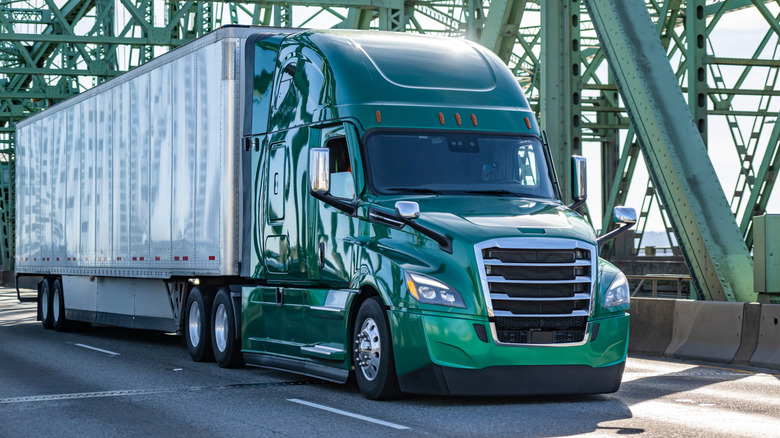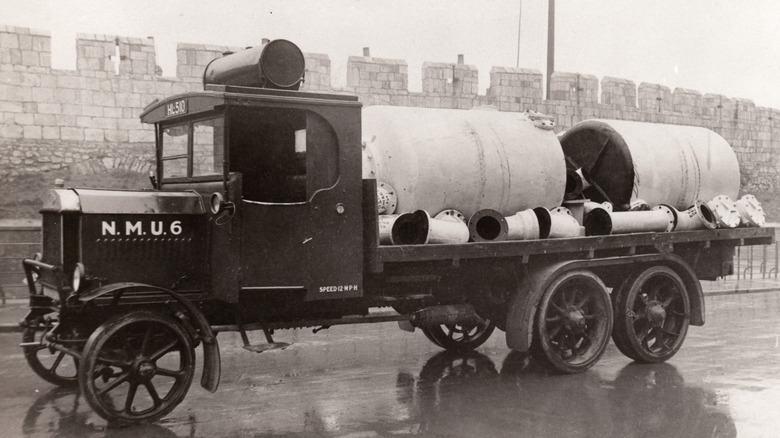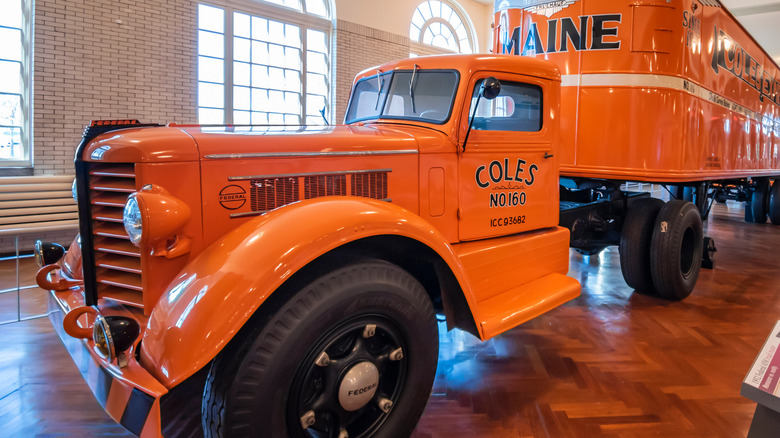Who Invented The Semi-Truck & When Was The First Model Sold?
The history of the semi-truck dates back to Cleveland, Ohio, in the late 1890s — back before even the Model T had hit the road. Alexander Winton, founder of the Winton Motor Carriage Company, was one of the earliest manufacturers of the so-called "horseless carriages" semi-trucks used to be known as. (Not quite one of the oldest car brands in the world, but pretty close to it.)
Near the turn of the 20th century, Winton had successfully sold his first dozen motor carriages — a real accomplishment, to be sure, but also the start of a logistical challenge for his company. His customers were scattered across the country, so delivering their cars meant either driving them long distances (which added wear and tear) or shipping them by rail, which was expensive and took too much time.
That's when Winton came up with a revolutionary idea: Why not haul the cars inside a bigger car? By 1899, Winton created and sold what is now recognized as the first semi-truck. The design was pretty basic by modern standards, nothing more than a modified touring car with a short wheelbase and a cart-like trailer to carry the car, but it was enough to completely change logistics forever.
Other innovators in the early days of semi-trucks
While it may have started as an internal solution to a delivery problem, Alexander Winton's hauler quickly became the prototype for a new kind of transportation. Other automakers quickly caught on and began working on their own versions of his idea.
While Winton's invention laid the groundwork, he didn't focus on refining or commercializing the semi-truck concept beyond his own company's usage. That work fell to others like August Charles Fruehauf. In 1914, the Detroit blacksmith worked with a major lumber business that needed a way to transport goods. Fruehauf built a trailer that could be hauled by the horsepower of a Ford Model T. It worked so well that he soon began producing similar semi-trailers for commercial use. By 1918, he had incorporated the Fruehauf Trailer Company — a brand that remains active in the industry today.
Around the same time, John C. Endebrock took his experience building horse-drawn carriages and used it to create a more user-friendly trailer called the "trailmobile." His 1918 invention was engineered so that just one single person could hook it up to a car — a major improvement over Fruehauf's more labor-intensive methods.
How semi-trucks changed around the mid-20th century
Car salesman George Cassens added another important layer to the semi industry's growth in the 1930s. Working with cars, he knew first-hand the cost barrier that manufacturers faced to deliver new cars. Cassens came up with a smart fix: a four-car trailer pulled by a two-ton Dodge truck. His innovation brought scale and efficiency to the growing industry.
At that same time, companies like Mack Trucks and Peterbilt were pushing the technology forward in their own unique ways. Mack earned its reputation by building durable trucks equipped with automatic starters (a first for the era). Peterbilt, still one of the most popular semi-trucks around, began selling trucks designed specifically for hauling logs.
The introduction of diesel engines in the mid-20th century changed the game again, increasing fuel efficiency by nearly 40%. Improved steering and brakes also made trucks safer and easier to operate. Thanks to some additional regulations from the U.S. and state governments, things like weight limits and the Federal Highway Act (which funded the construction of more than 40,000 miles of interstate highway) continued to improve how semis moved across the country.
Today, the semi-truck's role in the U.S. economy cannot be denied. Semi-trucks transport over 10 billion tons of freight annually in the U.S. alone. (That's 70% of all domestic shipments!) Thanks, Alexander Winton.


